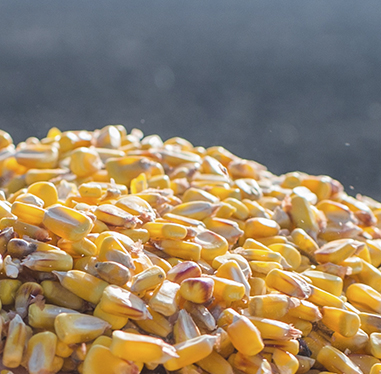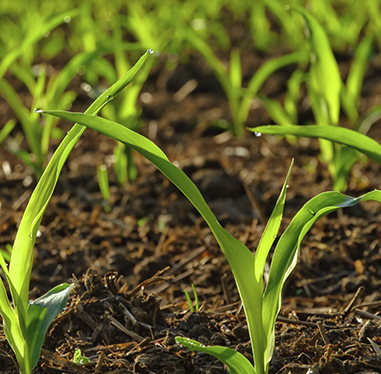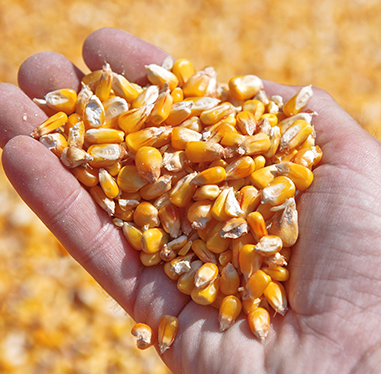
Farmers are making the switch as organic corn demand grows
Throughout recent years, the farming industry has seen a major surge in demand for organic food, including an increased demand for organic corn. This growth has been driven by an increase in organic food consumption as well as the increased production of organic dairy, poultry and livestock.
In the past, farmers in Canada and the United States have primary produced conventionally grown corn and soybeans. As a result, the vast majority of organic corn has been imported from other countries around the world. However, as demand for organic corn and other crops has increased, farmers in Canada and the United States have taken notice and begun to make the switch to organic in order to take advantage of the trend.
Organic, Non-GMO Corn is in Big Demand
Although the U.S. is the world’s top grower of corn, 90% of these crops are bioengineered. In Canada, around 70% of corn grown is genetically modified. With a growing demand for organic crops and not enough domestic organic farms to meet the need, the United States imports a great amount of its organic corn from other countries that are growing crops largely free from bioengineering.
US Organic Corn Imports in 2014
- Romania: 33%
- Turkey: 19%
- Netherlands: 18%
- Canada: 18%
- Argentina: 10%
- India: 2%
As demand for organically grown grains, including non-GMO corn, continues to increase each year, farmers in the U.S. and Canada have started moving away from bioengineered crops in favour of organic farming practices.

The Growth of Organic Farming in the US and Canada
North American farmers have begun to take advantage of this increasing demand of organic food and non-GMO feed, with the numbers of organic farms showing a steady increase over the past several years. This expansion of organic farming highlights the growing market for organic food, as well as the great potential for farmers who are willing to move away from genetically modified seeds and artificial chemicals to take advantage.
From 2014 to 2015, the number of organic farms in the United States rose from 14,000 to 20,000. In Canada, the number of certified farms has also continued to grow over the past decade and a half, with a 66.5% increase from 2001 to 2011. As of 2011, Canada had over 4100 certified organic farms including those in transition.
The map of organic farms in the US and Canada below shows just how many organic farms are currently operating across North America.

Canada
4,100+ organically
certified farms
66.5% increase from
2001 to 2011

United States
20,000+ certified
organic farms
42.8% increase from
2014 to 2015

Much to Gain by Converting to Organic Farming
Organic corn is ideal for small to mid sized farms across Canada and the U.S., and there are a number of initiatives that are helping support farmers through the three-year transition process. Many organic certifiers have transition programs for farmers that offer higher premiums throughout the transition period. The Organic Trade Association (OTA) is also working closely with the U.S. Department of Agriculture to ease the transition for organic farmers by creating a certified transition label program. Initiatives such as these are making it easier than ever for farmers in Canada and the U.S. to begin taking advantage of the large market for organic foods. In addition to these programs, De Dell also helps farmers transitioning to organic crops get off to a stronger start with non-gmo, untreated hybrids that provide higher yields and durability – both of which are an important concern during the transition period.
Although organic corn production comes at a higher initial economic cost, this is more than offset by the higher prices – often three times as much – that people are willing to pay for organic crops. The higher prices these crops can fetch compared to conventional crops, combined with the rise of organic meat and dairy production means there is high potential for expansion and profit.
As conventional markets sit at break-even prices for many farmers, the interest in organic farming continues to grow among farmers each year. These lowering prices will likely see the organic corn industry growth continue to expand, with many more farmers making the switch to organic crops in order to take advantage of the demand and benefits.
Switching to Organic Makes Sense
Over the past decade we have seen the number of organic farms in both the U.S. and Canada grow in response to increasing demand for organic corn and other crops. Farmers in North America are in an excellent position to profit from this organic farming growth and meet this demand, especially for organic corn.
Making the switch to organic farming will not only provide a better economic outlook for farmers, but it will also benefit domestic economies. Decreasing dependence on imported organic corn and food keeps the profits circulating within North America, supporting local farmers. As the growth rate of organic farming in North America continues to rise, farmers throughout both the U.S. and Canada will be in a great position to become top providers of organic crops.
The increasing sales of organic dairy and poultry combined with the growing demand for organic food and non-GMO corn shows no sign of slowing down. As sales of organic crops climb higher each year, farmers who are switching to organic methods will only continue to reap the benefits of this growing market.
Contact De Dell Seeds today to learn more about our organic seed corn or view our guide to growing organic corn to find out more about making the switch to organic.

Resources:
http://www.omafra.gov.on.ca/english/crops/facts/09-077.htm
https://agcensus.usda.gov/Publications/2012/Online_Resources/Organics/organics_1_001_001.pdf
http://www.usda.gov/wps/portal/usda/usdahome?contentid=2016/04/0084.xml
http://www.statcan.gc.ca/ca-ra2006/articles/snapshot-portrait-eng.htm
http://extension.psu.edu/plants/crops/grains/corn/production/organic-corn-production
http://cdn.theantimedia.org/wp-content/uploads/2016/04/organic.jpg
http://naturalsociety.com/demand-organics-growing-double-digit-growth-63748/
https://www.cog.ca/uploads/Canada%20Organic%20Stats%202011.pdf
http://non-gmoreport.com/articles/multiple-efforts-underway-to-increase-u-s-organic-farm-land/
http://www.statcan.gc.ca/pub/95-640-x/2011001/p1/p1-05-eng.htm
